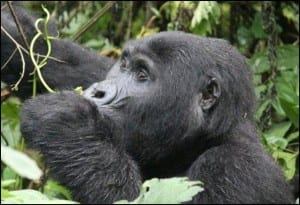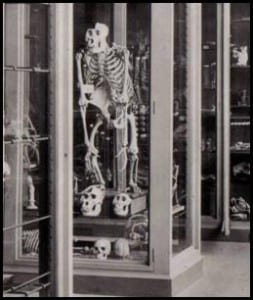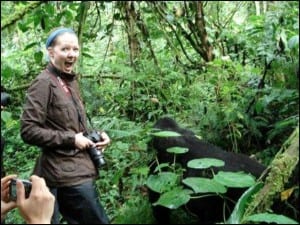Specimen of the Week: Week Seventeen
By Emma-Louise Nicholls, on 6 February 2012
 A week ago, the Grant Museum had a special family activities day called ‘Humanimals’, part of our exciting, and ongoing, Humanimals season which is investigating the influence that humans and animals have on each other. Our activities gave our visitors hands-on fun with furry, scaly, and boney specimens. One of the activities was a table covered in a jumble of bones from a real skeleton not too dissimilar to ours. The cunning idea behind the slyly educational activity was for our visitors to re-build the skeleton. We had our replica human skeleton standing next to the table for anatomical inspiration. It was so popular that it inspired this week’s specimen. The specimen of the week therefore is:
A week ago, the Grant Museum had a special family activities day called ‘Humanimals’, part of our exciting, and ongoing, Humanimals season which is investigating the influence that humans and animals have on each other. Our activities gave our visitors hands-on fun with furry, scaly, and boney specimens. One of the activities was a table covered in a jumble of bones from a real skeleton not too dissimilar to ours. The cunning idea behind the slyly educational activity was for our visitors to re-build the skeleton. We had our replica human skeleton standing next to the table for anatomical inspiration. It was so popular that it inspired this week’s specimen. The specimen of the week therefore is:
**!!!THE MOUNTAIN GORILLA!!!**
A greatly informative gathering of facts on our gorgeous friend the gorilla:

Kabukojo, the blackback gorilla of the Rusheguru group, in Bwindi Impenetrable Forest, Uganda. (C) E-L Nicholls
1) There are two species of gorilla, the Eastern and the Western. In a clear effort to make a biogeographical map of Africa balance out, gorillas divided each species into two subspecies. Mountain gorillas are a subspecies of Eastern gorilla and, as the name somewhat suggests, live in the misty mountain forests of central Africa. They have longer and thicker fur than their lower altitude dwelling relatives to cope with the colder climate.
2) Adult males grow to approximately twice the size of the females and the fur on their back turns ‘silver’ around the age of 13. Although in some circumstances more than one silverback may live within the family unit, only one will be dominant.
3) Three of the four subspecies of gorilla are critically endangered. For mountain gorillas the main threat is no longer a demand for their meat, or the collection of infants for the pet trade, but from the destruction of their forest home. Poor, and war-torn, local communities rely on the forest for many of their basic human needs. Meaning unfortunately that there is no easy solution.
4) The male mountain gorilla skeleton has been in the Grant Museum’s collection for over a hundred years and is shown here (see image left) in the museum in the 1880s. Rumour has it (on good authority) that our gorilla skeleton was once hugged by H.G. Wells himself.
5) I heard that the permit to see gorillas in the wild was about to double to $1000. So before I was priced out of my lifelong dream, and with my birthday as an excuse, I maxed out my credit card and hopped on a flight to Bwindi Impenetrable Forest in Uganda, home to almost 50% of all mountain gorillas, and spent the fastest hour known to time in their company. I bonded (in my head) with Kabukojo who is a black-back, or ‘vice-president to the silver-back’ if you like. I spent most of my time with him and when finally I left him to catch up to my group, he got up and followed me, passing within inches (see flattering image right). The guide tore us away after our hour, saying that we didn’t want to outstay our welcome and cause them stress. Quite right too. Only when we got back to camp, they had followed us. So we sat eating our sandwiches, in the middle of our camp, surrounded by wild gorillas. A pretty good day really.
We have fully articulated male and female skeletons plus male and female skulls to show the anatomical differences. All good reasons to get your skates on and come and see us!
One Response to “Specimen of the Week: Week Seventeen”
- 1
 Close
Close




Great blog Emma, lovely facts about the gorillas. If anyone wants to find out more about our furry friends or donate towards conservation efforts they can visit the Gorilla Organization’s website – http://www.gorillas.org. The Gorilla Organization’s mission is to safeguard the world’s few remaining gorillas through a programme of conservation, socio-economic development and education. Thanks!